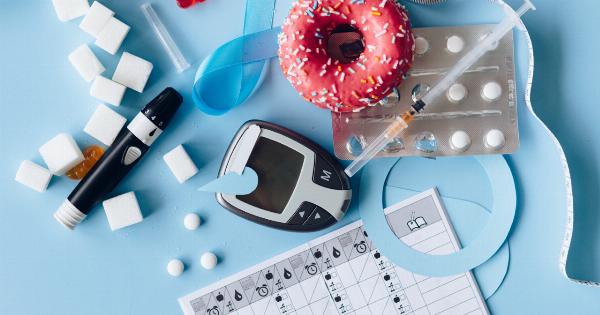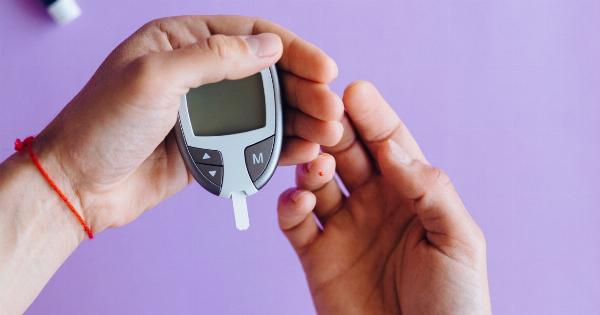Physical activity plays a crucial role in managing diabetes, a metabolic disorder characterized by high blood sugar levels. People with diabetes have impaired insulin action, which leads to insulin resistance and eventual instability of blood glucose.
Effects of Physical Activity on Insulin Sensitivity in Diabetes
Studies have shown that physical activity improves insulin sensitivity, glucose metabolism, and glycemic control in people with diabetes.
Exercise enhances insulin receptor signaling, glucose transport into muscle cells, and the uptake and utilization of glucose by skeletal muscle. Indirectly, physical activity also reduces body weight and body fat, which are associated with insulin resistance and type 2 diabetes.
Types of Physical Activity and their Benefits in Diabetes
Both aerobic exercise and resistance training are beneficial for people with diabetes.
Aerobic exercise, such as walking, cycling, swimming, or dancing, improves cardiovascular fitness, lung function, and endurance, while reducing blood pressure, cholesterol, and inflammation. Aerobic exercise also enhances glucose uptake by muscle and liver cells, and reduces the release of glucose from the liver.
Resistance training, such as weight lifting, push-ups, or squats, enhances muscle mass, strength, and function, while reducing insulin resistance and inflammation. Resistance training also increases the number and size of insulin-responsive muscle cells, and enhances the sensitivity and responsiveness of insulin receptors on muscle cells.
Factors Influencing Physical Activity and Insulin Sensitivity in Diabetes
Several factors can affect the relationship between physical activity and insulin sensitivity in diabetes.
These include age, sex, ethnicity, duration and severity of diabetes, medications, nutrition, and comorbidities such as hypertension, dyslipidemia, and neuropathy. Older people with diabetes may have reduced exercise capacity, balance, and mobility, and may need to adjust the intensity, frequency, and duration of physical activity.
Women with diabetes may experience hormonal fluctuations, menstrual cycle changes, and gestational diabetes, which may affect insulin sensitivity and glucose control. People with diabetes who have a longer duration or more complications of diabetes may have more advanced insulin resistance and require more aggressive treatment.
Certain medications for diabetes, such as insulin, sulfonylureas, and thiazolidinediones, may increase the risk of hypoglycemia, weight gain, and cardiovascular events, and require careful monitoring before, during, and after exercise. Nutrition also plays a crucial role in diabetes management, and physical activity should be accompanied by balanced meals, adequate hydration, and monitoring of blood glucose.
Comorbidities may also affect the choice and safety of physical activity, and require medical clearance and supervision.
Guidelines for Physical Activity in Diabetes
The American Diabetes Association recommends that people with diabetes engage in at least 150 minutes per week of moderate to vigorous aerobic exercise, spread over at least three days per week, and not more than two consecutive days without exercise.
Examples of moderate intensity exercise include brisk walking, light jogging, cycling, or water aerobics, while vigorous intensity exercise includes running, swimming, heavy cycling, or high-impact aerobics.
The American Diabetes Association also recommends that people with diabetes engage in resistance training at least two days per week, targeting all major muscle groups, and performing two to three sets of eight to ten repetitions at a moderate to high intensity. Resistance training should be preceded by aerobic exercise and warming up, and followed by stretching and cooling down.
The American Diabetes Association also recommends that people with diabetes monitor their blood glucose before, during, and after exercise, and adjust their medication and food intake accordingly. They should also wear appropriate footwear and clothing, carry water or sports drinks, and be aware of the signs and symptoms of hypoglycemia and hyperglycemia.
People with diabetes should also consult their healthcare provider before starting or changing their exercise program, especially if they have any comorbidities or complications.
Conclusion
Physical activity is an effective and safe intervention for improving insulin sensitivity, glucose metabolism, and glycemic control in people with diabetes.
Both aerobic exercise and resistance training have numerous benefits for overall health and wellbeing, and should be included in diabetes management plans. However, several factors can influence the relationship between physical activity and insulin sensitivity in diabetes, and require individualized approaches and recommendations.
Consultation with healthcare providers, monitoring of blood glucose, and adherence to guidelines are critical for achieving optimal outcomes and avoiding adverse events.






























